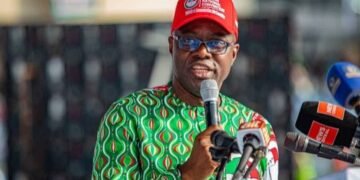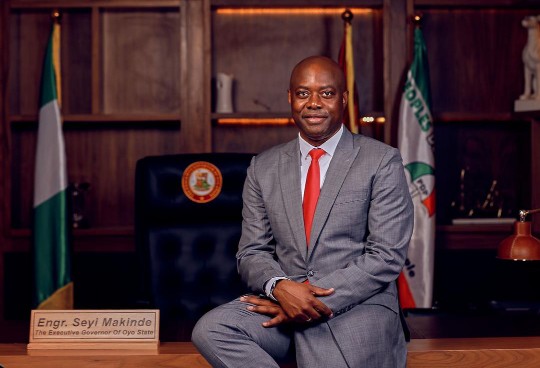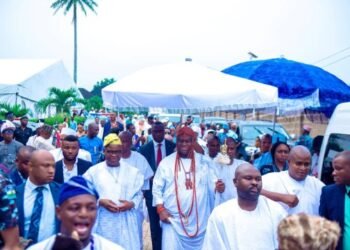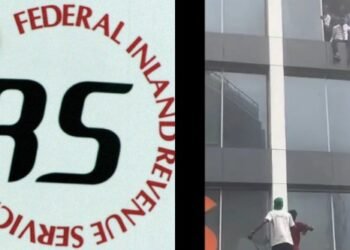“When vision meets resourcefulness, greatness becomes a cinch. That is the story of Seyi Makinde’s strides in Oyo State.”
Let’s set out with a fact: Between 1999 and 2019 no governor in Oyo State constructed a 65-kilometre long road, not one. That is a 20-year period. But within two years in office, Engineer Seyi Makinde was able to commence and complete the reconstruction of the Moniya-Ijaiye-Iseyin Road.
The 65-kilometre road project, which was awarded on November 1, 2019, was inaugurated on June 3, 2021. The road has taken away the stress associated with plying that route and reduced travel time between Ibadan, the state capital and the Oke-Ogun zone of the state, by as much as over two hours. Before the road was reconstructed, commuters spent about three hours between Moniya and Iseyin. But now, the trip is completed in 50 minutes or less.
But the Moniya-Iseyin Road is not Makinde’s only badge of honour. There is also the ongoing 76.7km Iseyin-Fapote-Ogbomoso Road. This is a completely new road which will link the Oke-Ogun and Ogbomoso zones of the state. The project is in fulfillment of the governor’s promise that his administration would focus on road projects which target the state’s economy and link the five zones of the state to increase economic activities and stem rural-urban migration.
When completed, this road will also provide easy access between the Ladoke Akintola University of Technology main campus in Ogbomoso and the College of Agricultural Sciences and Renewable Natural Resources in Iseyin. The road is nearing completion.
There is also the Oyo-Iseyin Road that links the Oyo and Oke-Ogun zones. Though a federal road, Makinde resolved to reconstruct the road due to its importance to the economy of the state. When the road is delivered, it would make access to Fasola Agribusiness Industrial Hub, which is also being developed by the state, easy.
Then there is the iconic Senator Rashidi Ladoja Circular Road, which is so dear to the governor’s heart because of the magnitude of its potential impact on the state’s economy.
The 110-kilometre road, which the governor has promised to deliver before the end of his current tenure, connects the Lagos-Ibadan expressway to the Ibadan-Ife expressway. It also connects the Lagos-Ibadan expressway to the Abeokuta-Ibadan road.
Therefore, the road takes the weight of heavy traffic coming from Lagos and other parts of the country off the city centre. The road will open a new corridor of business opportunities in the state. In addition, not only will the road transform the aerial view of Ibadan and wean it from the ‘brown roof city’ appellation, it will also upgrade its status to that of a 21st Century city.
There are also other road projects such as the rehabilitation of 45.3km Saki-Ogbooro-Igboho Road; the reconstruction of 37.41km Beere-Olorunsogo-Amuloko-Akanran-Dagbolu Road; the dualisation of the 12.5km Challenge-Odo Ona Elewe-Apata Road; the reconstruction of 12km Apete-Awotan-Akufo Road into a rigid pavement road; the reconstruction of 21km Airport-Ajia-New Ife Express Road with a spur to Amuloko; the dualisation of 7.3km Agodi Gate-Old Ife-Adegbayi Junction with a spur to Alakia Airport, Ibadan; the reconstruction of 5.2km Gedu-Oroki-Sabo-Asipa Road; and the reconstruction of the 4.15km BCJ-Railway-Gbekuba-NIHORT Junction, Ibadan, among other road projects.
These are in addition to other landmark projects across the state such as building a new College of Agricultural Sciences and Renewable Natural Resources, a campus of Ladoke Akintola University, in Iseyin, as well as regular payment of salaries and pensions and a deliberate effort to clear the backlog of inherited unpaid gratuities.
How has Makinde been able to pack so many achievements into four years and seven weeks despite the challenges of the times? How has he been able to accomplish so much in spite of the dwindling revenue from the centre? Why have the governor’s strides been longer, better and more impactful than those who came before him?
Two things are working for Seyi Makinde; these are vision and resourcefulness.
Vision is travelling into the future to see what is possible. Without vision nothing great gets done. Without vision, there is nothing to aspire to. Without vision, motivation to beat odds will be nil.
Vision is great because it brings focus to activities and prevents wasteful deployment of resources. Once a vision is cast, all energies are channeled towards its actualization. Thus, other things become insignificant.
Great leaders always live in the possibilities of the future, not the limitations of the moment. They do not allow the realities of the present to muffle them, rather they are motivated by the prospects the future offers and allow the possibilities to dictate their course of actions.
Hence, they rely on vision, which is the compass that guides a state into its desired destination. The vision encapsulates the aspiration of the state; where it wants to be and what it wants to become. Without a compelling vision, a state will only manage to crawl.
Because resources are never always sufficient to achieve the vision, leaders require resourcefulness to birth their vision.
Resourcefulness goes beyond doing more with less; it is the ability to optimize available resources to achieve set objectives. Resourcefulness is coming to the realisation that the leader and his team are capable of doing more than they initially thought possible. It is looking inwards and outwards to get a problem solved. It is thinking outside the box to make the seemingly impossible achievable.
Being resourceful has less to do with insufficient personnel, tools or funding but more to do with deploying available resources into finding a way out of a labyrinth.
Hence, every complaint about inadequate resource is an admission of deficiency in resourcefulness. Resourceful leaders can always get any resource they need by making use of the available ones.
When Makinde assumed office in 2019, he realized that reliance on revenue from the Federation Account would result in failure to deliver on his electoral promises. So, he devised a means of expanding the state’s income streams without taking the easy route of increasing taxes.
Rather, he resorted to widening the tax net and capturing more persons who were not paying taxes in both the formal and informal sectors. His administration, to tackle the challenges of tax evasion, tax avoidance, tax ascertainment and the cumbersome payment system, deployed information and communication technology.
The government also reduced some charges, such as the mandatory tax on building plan approval and development levy fees, to encourage more persons to voluntarily pay their taxes as and when due. The state similarly activated the land use charge to raise revenue for capital projects.
The strategies paid off with the Internally Generated Revenue (IGR) increasing from N24.63 billion in 2018 to N26.58 billion in 2019. It leapt to N38.04 billion in 2020 and hit N52.08 billion in 2021.
By the end of 2022, the state’s monthly IGR was about N4 billion. Consequently, the Gross Domestic Product (GDP) of the state rose from N2.75 trillion in 2019 to N4.05 trillion as of Q3 2022.
Despite this growth in IGR, there were still funding gaps for capital projects. So, the governor keyed into the Alternative Project Funding Approach (APFA), an innovative system for raising funds for projects.
With that the government was able to undertake some major projects such as the Lekan Salami Sports Complex, Adamasingba, the 9.7km Saki Township Road dualisation, the 299 primary healthcare centres renovation and the General Gas Flyover construction.
What vision conceives, resourcefulness births.
When Makinde envisioned a remodeled Lekan Salami Sports Complex, his resourcefulness made it a reality.
When Makinde conceived the idea of reconstructing Moniya-Iseyin road, his resourcefulness delivered it to the people of Oyo State.
When Makinde thought of renovating primary health centres in Oyo State, his resourcefulness delivered about 300 PHCs to the citizens.
When Makinde visualized Ladoke Akintola University of Technology being wholly-owned by Oyo State, his resourcefulness made it possible.
When Makinde thought of a campus of LAUTECH being cited in Iseyin, his resourcefulness made it a reality.
With vision, Makinde imagined a brand new road to connect Ogbomoso and Oke Ogun zones in the state, with resourcefulness the road is gradually becoming a reality.
And there are tens and tens more…..
When vision meets resourcefulness, greatness becomes a cinch. That is the story of Seyi Makinde’s strides in Oyo State.
•Olanrewaju is the Chief Press Secretary to Oyo State Governor.





























